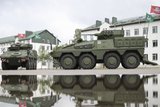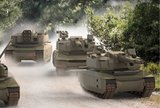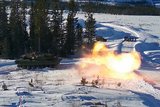Lessons from Nagorno-Karabakh hint at future procurement trends
The recent conflict in Nagorno-Karabakh has stirred debate as to what the future of warfighting might look like – with potential consequences for procurement strategies.
The success of Azeri UCAVs and loitering munitions (supplied respectively by Turkey and Israel) against Armenian armour has shone a spotlight on various issues: the continued relevance of tanks, the deployment of effective and inexpensive airpower in the form of unmanned aircraft, and the shortcomings of air defence systems.
The use of UCAVs and loitering munitions is nothing new, but the manner of their deployment in Nagorno-Karabakh is noteworthy. ‘The general understanding used
Already have an account? Log in
Want to keep reading this article?
More from Land Warfare
-
![Hungary set to begin using Hero 400 loitering munitions]()
Hungary set to begin using Hero 400 loitering munitions
Developed by Israel's Uvision and with systems being sold in the thousands to multiple European NATO countries and the US, the Hero family of loitering systems is also in production in the US and Italy, the latter through Rheinmetall.
-
![Croatia orders Leopards and CAESAR howitzers as Lithuania orders more CAESARs]()
Croatia orders Leopards and CAESAR howitzers as Lithuania orders more CAESARs
The Leopard is becoming the tank of choice in central and eastern Europe as Croatia joins Lithuania, the Czech Republic and Hungary in ordering the platform. Lithuania and Croatia have also signed for CAESAR howitzers.
-
![Light Reconnaissance Strike – enabling a vital mission set (Studio)]()
Light Reconnaissance Strike – enabling a vital mission set (Studio)
A new system-of-systems concept will unlock digital integration of sensors and weapons for Light Forces, allowing them to shape the battlefield environment on their own terms and upgrade legacy platforms.
























